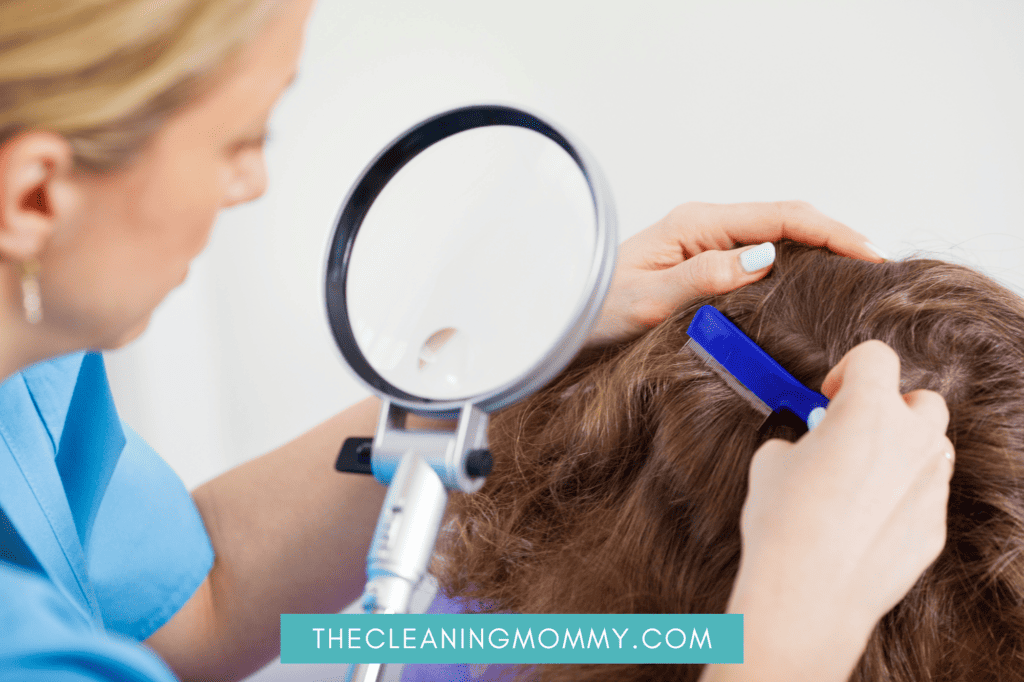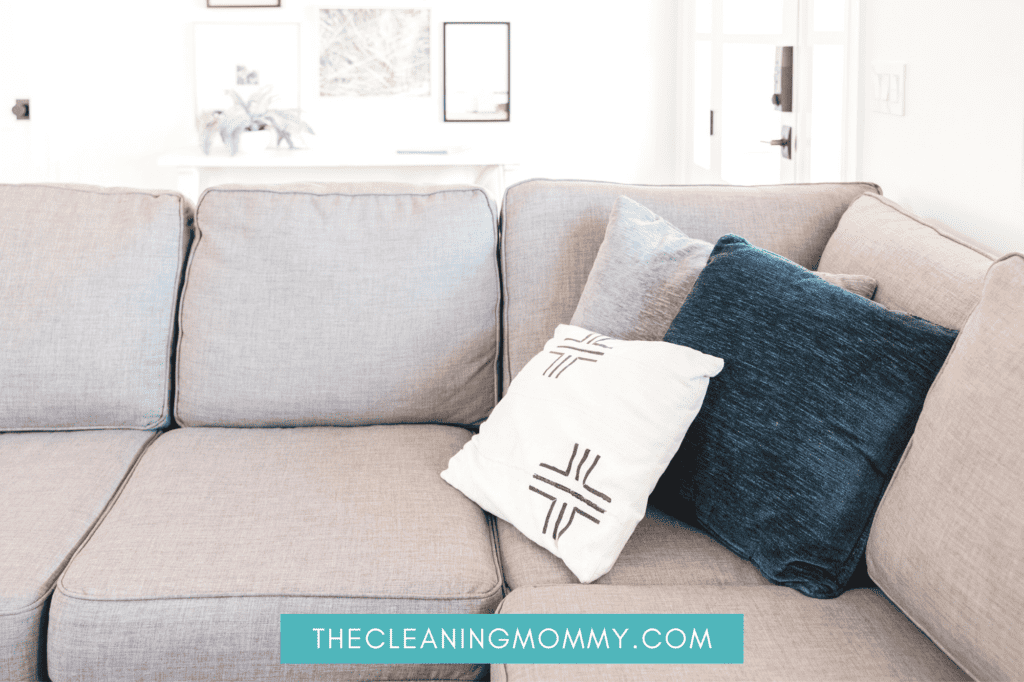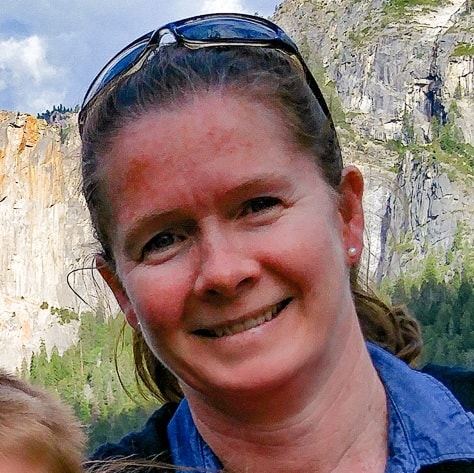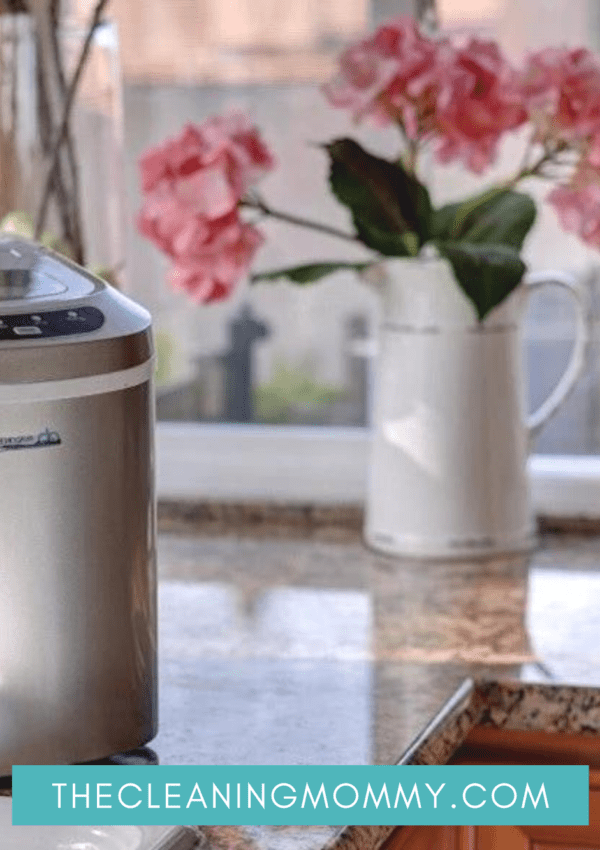Let’s talk about a not-so-fun subject today — head lice.
Just the mere mention of these pesky critters gets many of us scratching our heads in disgust. If you’ve discovered you or your family member has been infested with these tiny, contagious crawlies, you’d probably want to know how to clean your house after lice.
I hear you.
Stay with me as I share everything you need to know about removing lice from your house.
Head lice aren’t choosy. They don’t care whether you have dirty or clean hair because all that matters to them is these three things — warmth, moisture, and a blood meal (which they can find on any human scalp, clean or not).
The first thing you need to do before going crazy on cleaning when you have a lice situation is to ensure the infested family member gets started on lice treatment immediately.
And no, don’t feel ashamed if you’re having a lice problem in the house. Head lice infestation doesn’t necessarily indicate a hygiene problem — it has everything to do with how easily and fast lice outbreaks spread.
Ready to learn more about lice infestations and cleaning your house after lice? Let’s get into it.
*This post contains affiliate links. Full disclosure here.

Cleaning Supplies Needed to Clean Up After a Head Lice Infestation
There are certain supplies you will need to clean your house after lice, most of these things you will already have in your home thankfully.
- Ziplock bags (the good kind)
- Garbage bags (the thick kind)
- Comb for checking for head lice
- Vacuum
#1 Disinfect Hair Brushes and Combs in Hot Water
High temperatures kill lice; that’s why boiling hot water is super effective in eliminating head lice completely.
All you need to do is bring a kettle of water to a boil, gather all the infested hair combs, hair ties, and the other hair accessories (use disposable gloves to do this), transfer the hot water into a basin, and soak all these items.
Consider adding your disinfectant of choice to the water.
Let these hair items soak for a couple of minutes before laying them on a clean rug and letting them air dry.
For the items you can’t soak in hot water (yet they’ve come into contact with the lice-infested hair) — things like headphones and glasses — wipe them down with a clean cloth slightly dampened with soapy water.
Finish off by wiping them with disinfecting wipes.
#2 Wash All Infested Clothing and Bedding
Strip all the lice-infested beds fully and take the pillowcases, bed sheets, duvet covers, mattress covers, and blankets to the laundry area for machine washing. Take all clothing worn or in contact with the infected child for washing as well.
If you’re not sure about a piece of clothing, throw it in for clothing anyway. It’s best to be overly cautious in a situation like this.

Washing Machine Settings
To properly machine wash your clothes and bedding after a lice infestation, you’ll need to adjust your washing machine settings. Start by setting the water temperature to at least 130°F (54°C) as this will kill the lice effectively. Choose the appropriate cycle for the type of fabrics you’re washing, while ensuring that the highest possible heat is used. Don’t forget to check the care labels on your clothes and bedding for specific washing instructions.
Using Detergent and High Water Temperature
Using a detergent specifically designed for high-efficiency machines is crucial, as it will help remove the lice and any dirt and grime present on your clothing and bedding. Ensure you use the recommended amount of detergent according to the product’s instructions. Hot water is key to killing lice effectively, so make sure the water temperature remains at 130°F (54°C) throughout the wash. Once you’ve added the detergent, water, and clothes to the machine, start the wash cycle and let the machine do its work.
It is very important to wash all bedding and clothing after a lice infestation to avoid further spreading. With the right washing machine temperatures, the right detergent, and the right dryer settings, you can ensure that the infestation will be stopped and your clothing will be clean.
Drying and Heat Treatment
Using High Heat Drying Cycle
Once your clothes are through the wash, the next step is to dry clothing and bedding using dryer heat to ensure nothing lives. Run the highest heat dryer cycle on all bedding and any clothes that can be run at high heat. Wash and dry any bedding and clothes that have been in contact with the infested person during the last 2 days.
Time and Temperature Requirements
The key to successfully killing lice and eggs is ensuring that the right temperature and time combination is used when drying your clothes. For the dryer method, experts recommend setting your dryer’s temperature at around 130°F and running it for a minimum of 40 minutes. This will kill both the adult lice and their eggs, preventing re-infestation.
Keep in mind that effective lice treatment requires not only washing and drying your clothing but also treating the infested individual’s hair with appropriate over-the-counter or prescription medications. In conjunction, these methods help ensure a lice-free home, safeguarding the health of you and your children.

#3 Cleaning Non-Washable Items
Dry Cleaning
For items that cannot be machine washed, such as hats and delicate clothing, you can opt for dry cleaning to eliminate lice and lice eggs. Simply take the infested items to your local dry cleaners and inform them about the lice infestation so they can take the necessary precautions.
Using Freezer and Lint Roller
For the infested items that can’t go in the washer or dryer — think of stuffed animals, helmets, and hair wigs — put each of them in a plastic ziplock bag, then place the airtight plastic bags in the freezer.
Leave these items in the freezer overnight, as the cold temperature will kill both lice and eggs. After removing items from the freezer, use a lint roller to remove any dead lice or eggs that may still be clinging to the surfaces.
If you don’t own a freezer, there’s another easy way to suffocate and kill lice. Simply place these items in a big plastic bag, seal the bag completely, and leave the items in the air-tight plastic bag for a couple of days.
#4 Vacuum Your Home Thoroughly
Vacuum all your mattresses, upholstered furniture, carpet, rugs, curtains, throw pillows, bedroom pillows, and car seats. For the best results, run a lint roller on the furniture surfaces. A lint roller will help unhook the lice from the fabric.
And as you vacuum your couches (and car seats)and any other cloth furniture, pay close attention to the creases and under the armrests. It’s common for head lice to gather and hide in these areas, so be sure to go over these spots with the lint roller and vacuum attachment to get any remaining lice
You can place the throw pillows in clean trash bags to suffocate and kill all the lice. Ensure you’ve tightly sealed the bags.

Does Your Child Have Lice?
If there’s a population that’s highly prone to head lice, it’s children. And it’s not just school nurses that can confirm this — there’s also research to back this up.
The Centers for Disease Control and Prevention (CDC) estimates that every year, about six to 12 million children aged between 3 to 11 years get infested with head lice.
That’s a HUGE number for sure, and it only proves one thing — how common lice infestations are among children.
If your little one has lice, they probably got it from another infested child. We all know how carefree and generous kids can get — leaning on each other’s heads, sharing hair accessories, and doing other normal kid stuff that involves direct head contact.
The good thing is, head lice don’t carry any diseases. But they do lead to some pretty uncomfortable symptoms while on their human host.
You can know your child has contracted head lice if you notice the following:
- They’re constantly scratching their scalp, ears, and neck. As head lice feed on blood from the human scalp, they bite, which causes itchiness.
- Traces of the head lice eggs (nits) around the hairline and ears. When the female head lice hatch on the scalp, some eggs attach themselves to the hair shafts while others settle along the hairline and around the ears.
Unlike adult lice which are darker and can’t be easily seen (plus they move so quickly on the scalp), nits are whitish in color, which makes it easier to spot them on the hair shafts, hairline and around the ears. Nits look like dandruff on dry hair.
- Red bumps on the scalp, ears, around the neck, and along the hairline. This is due to excessive scratching.
- Difficulty sleeping. Head lice love the dark, so they’re most active when the infested person is asleep at night. And by active, I mean feeding and moving around the scalp.
- Complaints of feeling ticklish as though something’s running all over their scalp.

You can also run a fine-toothed comb gently through your child’s hair and see if some of the live lice and nits will attach themselves to the comb’s teeth.
While adult lice and nits often cling onto the hair shaft like their life depends on it (they have hook-like claws), a fine-toothed comb will help loosen them. Make sure you soak the comb in hot water once you’re done using it on your child’s head.
- I can’t say for sure this was the reason my kids have never gotten lice, but I have used this on my kid’s hair and so far (knock on wood), we have not had any lice in our house!
When your child has contracted lice, everything that comes into contact with their hair may end up with these nasty critters. Think of their pillow, beddings, hoodies, caps, hair brushes, hair accessories, headphones, stuffed animals, scarves, the couch, car seats…….and so on.
And if you hang the lice-infested clothes together with lice free-clothing, these annoying crawlies will find their way to the other cloth surfaces. Some of the lice can hide on the creases of your couch as others crawl to your carpet and curtains.
If you or your family members come into direct contact with anything contaminated with these nasty critters, there’s a high chance you’ll catch lice. That’s why you should ensure your child gets started on treatment as soon as possible.
There are effective over-the-counter head lice treatments (medications) and shampoos that deal with lice infestation. And for the treatment to be fully successful, you must follow all the manufacturer’s instructions on the drug or lice shampoo product label.
It’s also advisable to take your child to a lice removal clinic if the over-the-counter medication or special shampoo doesn’t seem to work.

Should We Call the Exterminators?
The truth is, you don’t need any special skills or products to kill lice. You can wash up and vacuum everything by yourself and still have a successful lice elimination session.
But if we’re being honest here, it’s a pretty daunting task — especially if you’re dealing with a severe case of lice infestation.
If you’ve discovered your clean house has officially become a lice center and you don’t have the time to do all that cleaning, or maybe you just don’t want to go through the hassle of handling everything on your own, then it’s a great idea to seek professional lice extermination services.
Professional exterminators will help you get your house to a lice-free state in no time.
Do Pets Need to Be Treated for Lice?
Pets don’t get attacked by the same species of lice that attack humans.
That means your pet can’t suffer from head lice because this type of lice only thrives on a human host — they prefer the body temperature of the human head. Also, head lice survive purely on a human blood meal.
And even if the head lice from someone’s hair or an infected surface crawls onto your pet’s body, these nasty critters will probably crawl out because they can’t feed on pet blood, and the pet’s body isn’t their ideal host.
But it’s important to wash your pet’s bedding if you have a head lice situation going on so that there are no traces of these stubborn parasites in your house.
Pets get attacked by a specific type of lice that only survives on pet blood and can only thrive on a pet’s body — not on a human host.
If your pet has been infested with lice, you should ensure they get professional lice treatment.
There are specific lice-removal medications prescribed for pets with lice infestation. So, don’t use any human head lice treatments on your pet. Instead, get in touch with your vet to know what the treatment options are.

How to Clean Your House After Lice: Conclusion
Head lice infestations are pretty common. Contrary to what many think, these parasites can invade the tidiest of homes and cleanest of hairs.
And while they don’t pose any health risks since they carry no viruses or bacteria, head lice are quite a nuisance because of the unpleasant symptoms they cause when they cling onto the hair shaft.
Fortunately, removing lice from the house isn’t complicated.-
Most people assume that eliminating lice means disposing of any lice-infested item for good, which isn’t the case.
Getting rid of lice completely only requires thorough cleaning and vacuuming. You can do this on your own, take the infested beddings or clothes for dry cleaning, or call in head lice removal professionals.
You should ensure the infested family member receives professional lice treatment to avoid recurring lice infestation in your house.
Also make sure to let the other parents know your child has head lice, so they can take immediate action t check their child for head lice.
I’m so sorry if you’re dealing with head lice in your home, but I hope I have given you some easy tips on how to clean your house after lice.
Other Related Articles You May Enjoy:
- How to deep clean your living room + checklist
- The best diy cleaning slime
- Best tips for deep cleaning your bathroom
- How to clean high chair straps
- Best way to remove bed bugs from carpet
- How to clean your home after someone has been sick

Grainne Foley
Grainne Foley is a wife and mother of 2 great kids. During her 5 years of full time RV travel, Grainne learned to become very efficient at household chores, in order to make time for family adventures. Now, back in a house, she has continued to create tools and techniques to help others lighten the load of household organization and cleaning.





Leave a Reply